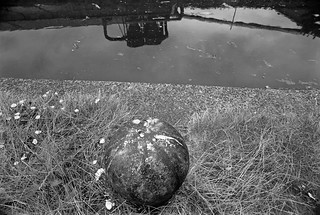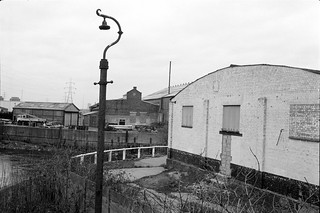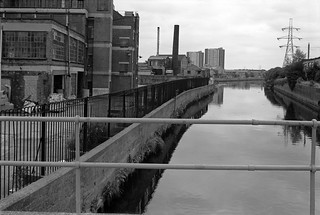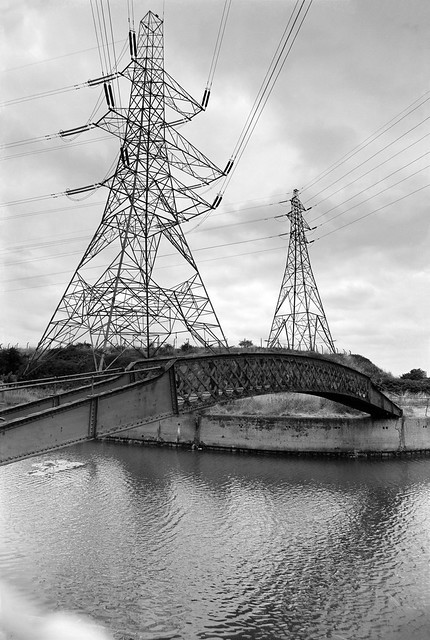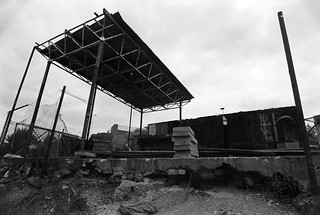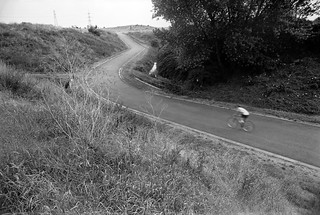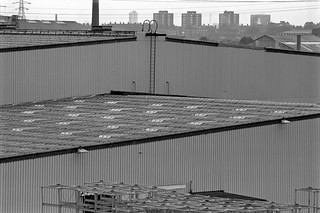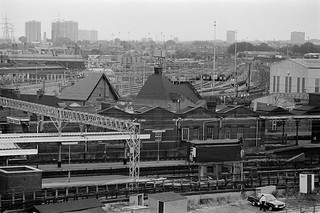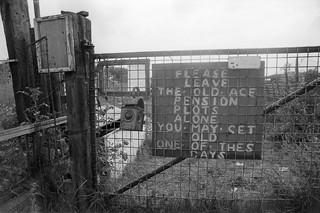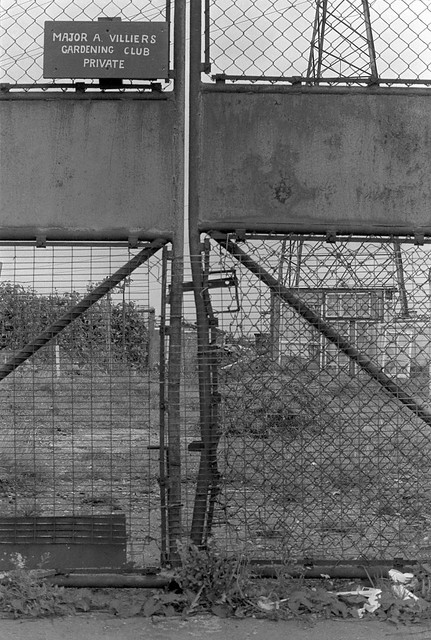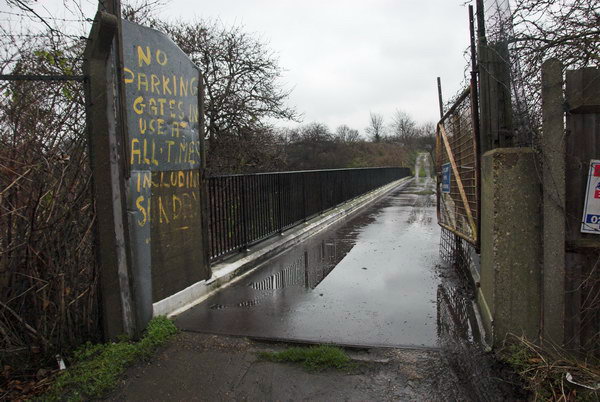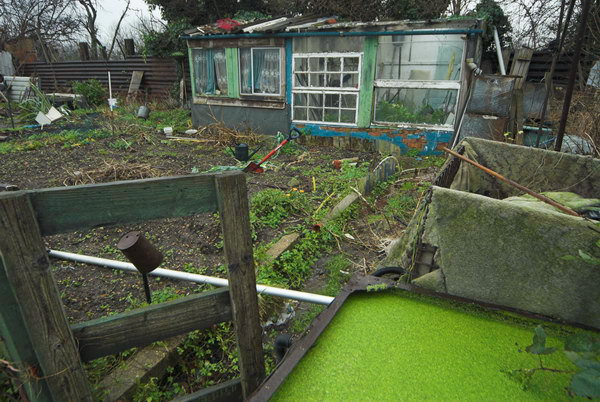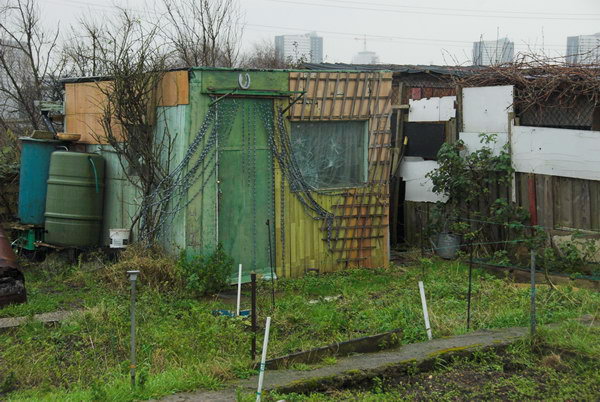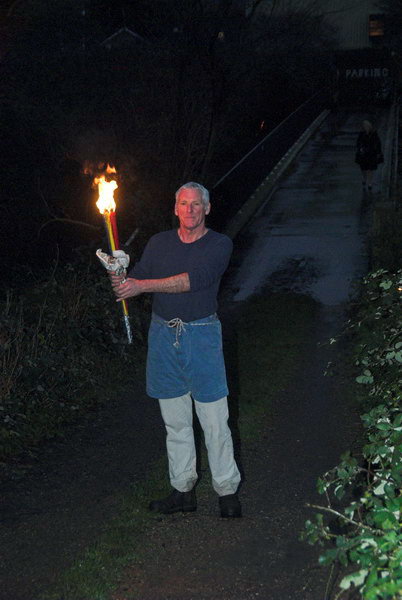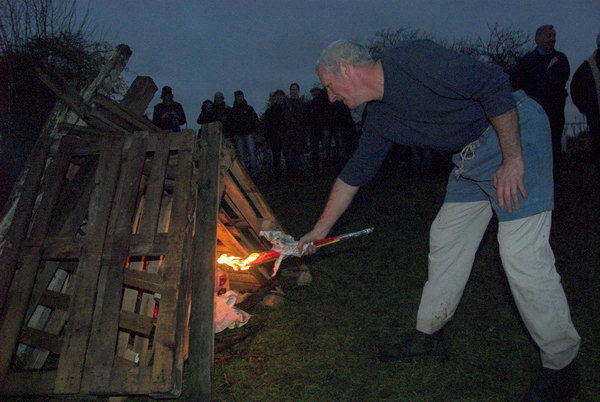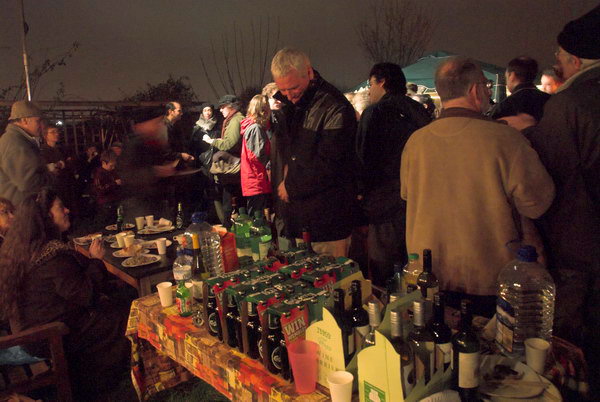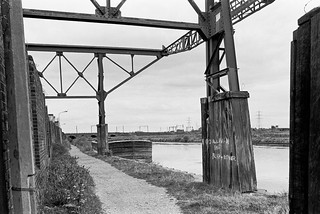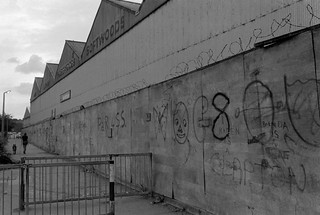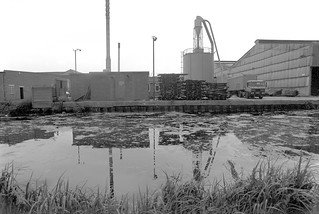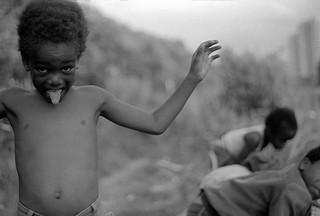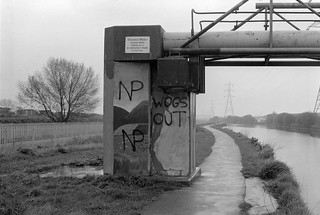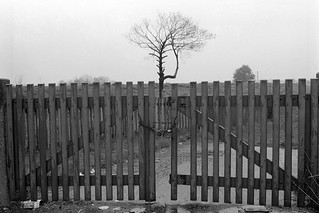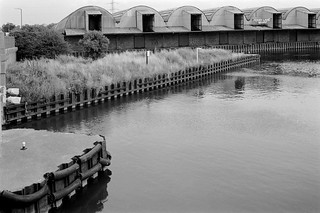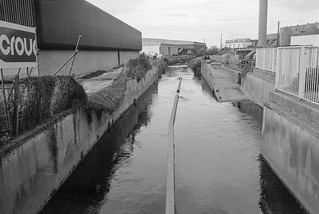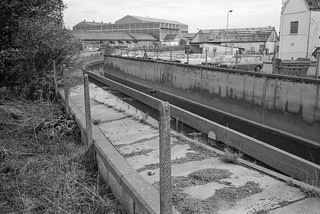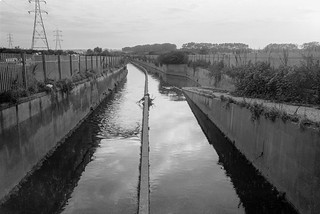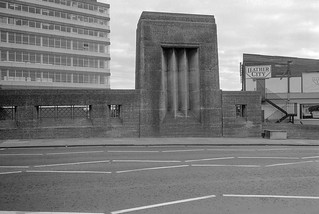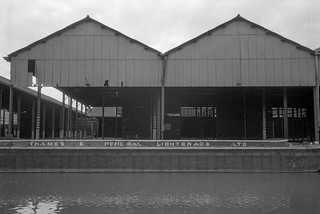I titled my self-published book put together in 2010 on the Lee Valley ‘Before the Olympics‘ because many of the pictures in it were taken in an area that was then being largely destroyed for a few weeks of sporting activities in 2012.
It was an area that over the previous 25 or so years had held a particular fascination for me as a post-industrial wilderness close to the centre of London, one of the world’s greatest cities. Within a few yards of busy major roads I could find myself struggling to walk along overgrown paths – and sometimes having to climb over or around fences to do so. For months a pair of secatuers were needed in my camera bag to cut through the brambles that barred my progress (though when I wrote earlier about this I slightly exagerrated them as a ‘machete’.)
At times I spent hours wandering the area without meeting or seeing another living soul, or only across rivers, perhaps working in one of the many small businesses still at work, often in ramshackle buildings with smoke or steam emerging though ventilators or cracks. Or I would emerge from under a bridge or around a corner to see large industrial structures such as oil storage tanks.
It was of course an area that was bound to change, but not in the way it has. And the old was in some respects dystopian. Many of the remaining businesses were the kind that we like to hide away on the fringes, perhaps necessary but best kept out of sight. The River Lea was during the worst years of the development of industry the outer boundary of London, inside which there was a long history of restrictions to curb the activities of the most noxious and polluting industries; across that boundary almost anything went and factories were set up to enjoy that licence to pollute.
Those years of largely unfettered industrial activity had left their toxic legacy in the soil, though some plants seemed to thrive on it. There were schemes to tidy up the area in the 1990s, with some streams and paths being cleared and the route beside the Waterworks River being decorated with art from junior schools in the area, but nature soon took it back , and a few years later I was again struggling through shoulder-high weeds.
The Olympics were terra-forming, with tons of soil from the area being sterilised, tons being dumped elsewhere in landfill, and virgin soil brought in, in part from building work on the Channel Tunnel Rail Link. A new landscape emerged, retaining the watery outlines of the old, along with the Greenway and the major rail routes but with different land, and none of what was previously present on the rest of its surface, though with new white elephants fast being constructed.
All photographs on this and my other sites, unless otherwise stated, are taken by and copyright of Peter Marshall, and are available for reproduction or can be bought as prints.



